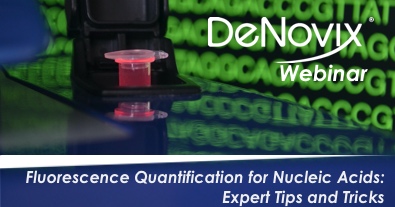Absorbance and fluorescence analysis are distinct yet complementary techniques used to detect and quantify analytes of interest in a sample. Measuring the absorbance of ultraviolet and visible (UV-Vis) light at specific wavelengths is one of the most established methods of quantitating biomolecules. Fluorescence analysis, meanwhile, has long been used to measure the emission spectra of fluorophores binding to samples excited by wavelengths for highly specific molecular quantification.

Tags -



